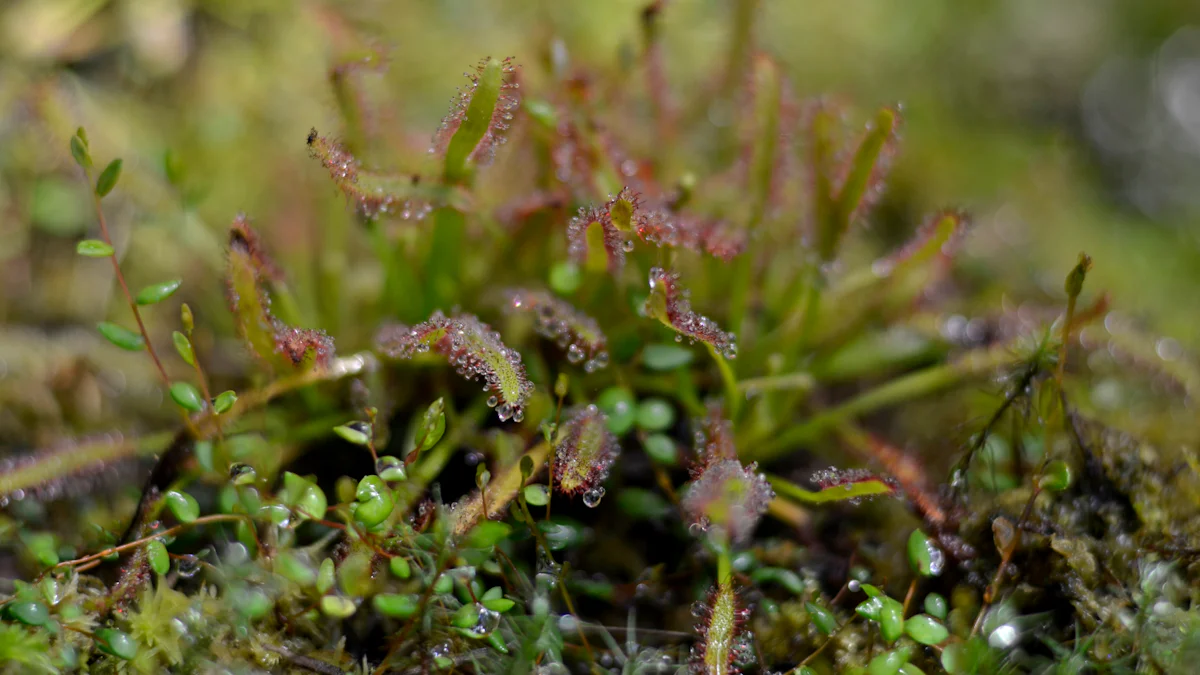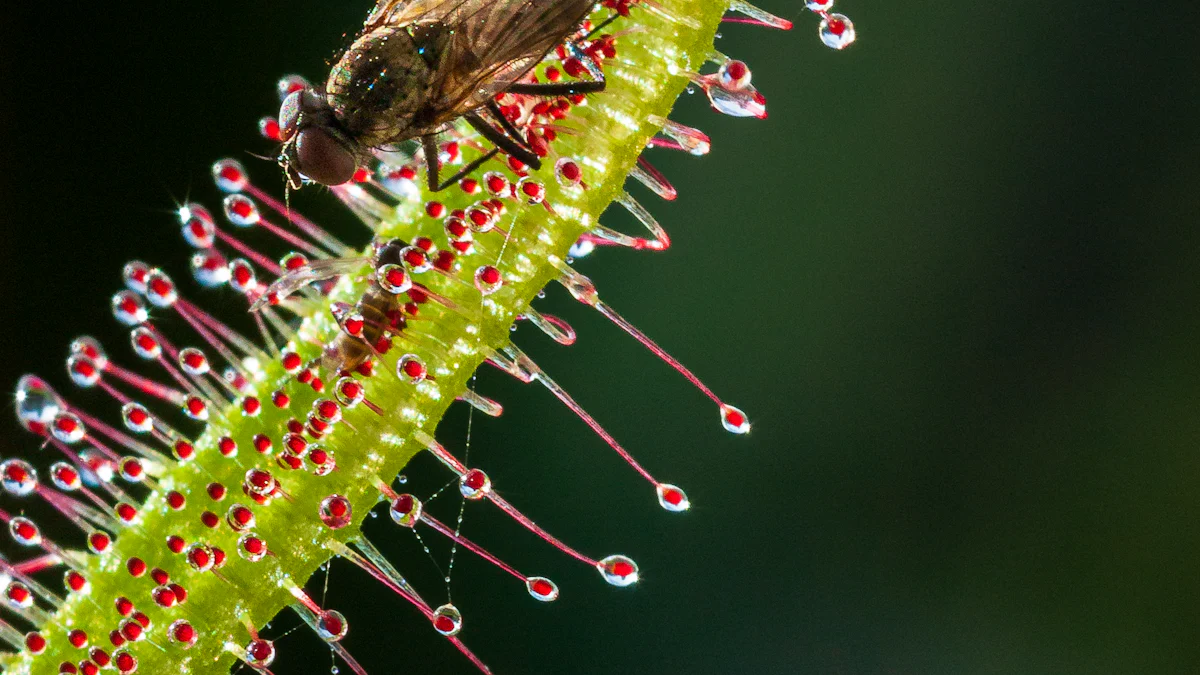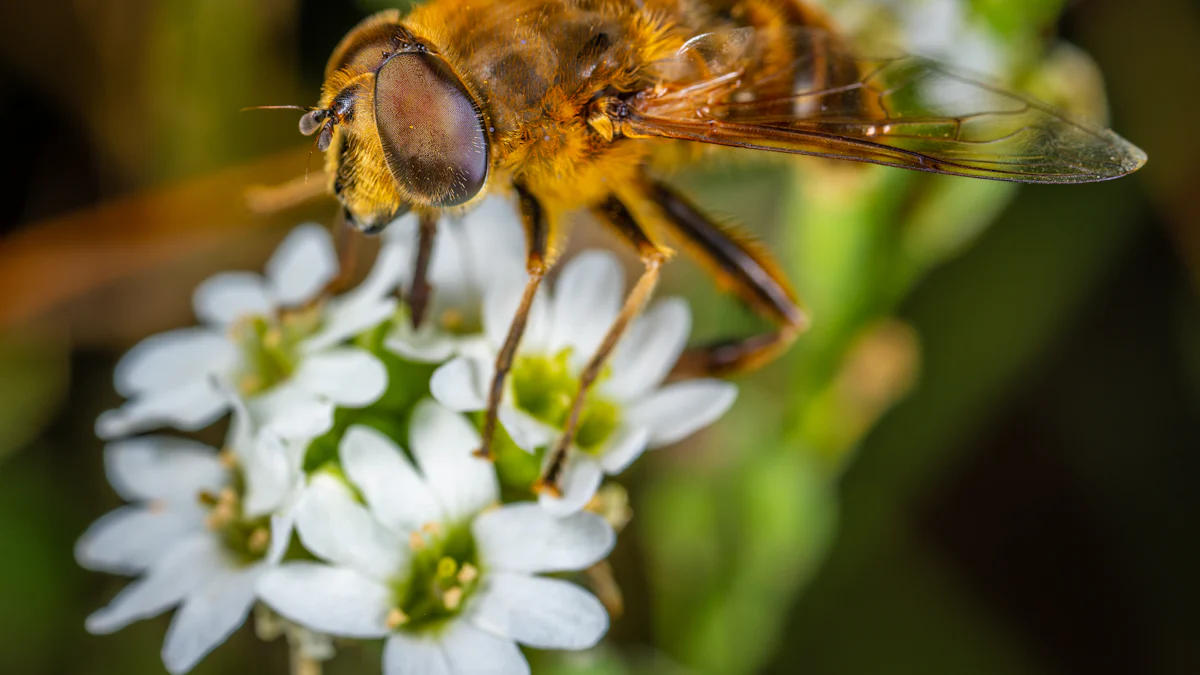
Venus flytraps thrive on a diet of insects, and dried mealworms offer a practical and nutritious option. These tiny, protein-packed snacks are easy to store and free from the risks of pests or diseases that live insects might carry. Before feeding, you’ll need to rehydrate the mealworms to make them easier for your plant to digest. This simple step ensures your Venus flytrap gets the nutrients it needs without any harm. With proper preparation, feeding Venus Fly Trap Dried Mealworms becomes a safe and effective way to support its health.
Key Takeaways
- Dried mealworms are a nutritious and convenient food option for Venus flytraps, providing essential proteins and nutrients.
- Always rehydrate dried mealworms by soaking them in water for about 30 minutes before feeding to ensure easy digestion.
- Feed your Venus flytrap sparingly, ideally once every two to three weeks, to prevent overfeeding and potential health issues.
- Monitor your plant’s response after feeding; healthy traps should close tightly and remain sealed for several days.
- Ensure the mealworm size is no larger than one-third of the trap to avoid digestion problems and stress on the plant.
- Consider alternative feeding options like small live insects or other protein sources, but dried mealworms remain the safest and easiest choice.
- Regularly inspect your Venus flytrap for signs of distress, such as blackened traps, to adjust your feeding practices accordingly.
Understanding the Nutritional Needs of Venus Flytraps
Venus flytraps are fascinating plants with unique dietary needs. Unlike most plants, they don’t rely solely on their roots to absorb nutrients. Instead, they’ve adapted to nutrient-poor soils by supplementing their diet with insects. This adaptation allows them to thrive in environments where other plants might struggle.
Why Venus Flytraps Need Insects
Venus flytraps consume insects to obtain essential nutrients like nitrogen, phosphorus, and potassium. These nutrients are vital for their growth, energy production, and overall health. In their natural habitat, the soil lacks these nutrients, so the plant relies on its traps to capture prey and extract what it needs.
The process begins when an insect touches the trigger hairs inside the trap. This contact causes the trap to snap shut, enclosing the prey. Over time, the plant secretes digestive enzymes to break down the insect and absorb the nutrients. This feeding mechanism not only supports the plant’s growth but also enhances its ability to resist harsh environmental conditions.
“Venus flytraps have evolved their feeding mechanism to compensate for nutrient-poor soil by supplementing their diet with insects.” – Healthy House Plants
While Venus flytraps can survive without insects, feeding them provides a noticeable boost in their growth and vitality. It’s like giving your plant a special treat that helps it thrive.
Are Dried Mealworms a Suitable Food Option?
Dried mealworms are an excellent choice for feeding Venus flytraps. They’re packed with protein and other nutrients that mimic the benefits of live insects. Unlike live prey, dried mealworms are easy to store, mess-free, and free from the risks of pests or diseases. This makes them a convenient and safe option for plant owners.
Before feeding, you’ll need to rehydrate the mealworms by soaking them in water for about 30 minutes. This step softens the mealworms, making them easier for the plant to digest. Once prepared, they provide a nutritious meal that supports the plant’s health and growth.
While live insects can stimulate the traps to close naturally, dried mealworms still offer significant advantages. They’re readily available, require minimal preparation, and eliminate the need to handle live prey. For many plant enthusiasts, this convenience makes dried mealworms a preferred choice.
Tip: When feeding Venus Fly Trap Dried Mealworms, ensure the size of the mealworm doesn’t exceed one-third of the trap. This prevents digestion issues and keeps your plant healthy.
By choosing dried mealworms, you’re giving your Venus flytrap a reliable source of nutrients without the hassle of live feeding. It’s a practical way to meet the plant’s dietary needs while keeping things simple for you.
Feeding Venus Fly Trap Dried Mealworms: Preparation and Techniques

Feeding Venus Fly Trap Dried Mealworms can be a simple and rewarding process when you know the right steps. Proper preparation and feeding techniques ensure your plant gets the nutrients it needs without any risks. Let’s dive into how you can make this process smooth and effective.
How to Prepare Dried Mealworms
Before feeding, you need to prepare the dried mealworms properly. This step is crucial because Venus flytraps digest soft, moist food more easily than dry, hard pieces. Here’s how you can do it:
- Rehydrate the Mealworms: Place the dried mealworms in a small bowl of water. Let them soak for about 30 minutes. This softens them and makes them more palatable for your plant.
- Check the Size: Ensure the mealworm is no larger than one-third of the trap’s size. Oversized food can cause digestion problems or even damage the trap.
- Pat Dry: After soaking, gently pat the mealworms dry with a paper towel. This removes excess water while keeping them moist enough for easy digestion.
By taking these steps, you’re setting your Venus flytrap up for a healthy and stress-free feeding experience.
“Proper preparation of dried mealworms ensures your Venus flytrap can digest them efficiently, promoting better health and growth.”
Step-by-Step Guide to Feeding Dried Mealworms
Once the mealworms are ready, it’s time to feed your Venus flytrap. Follow this simple guide to make sure you’re doing it right:
- Choose the Right Trap: Pick a healthy, open trap that’s ready to close. Avoid feeding traps that are already digesting or damaged.
- Place the Mealworm: Use tweezers to gently place the rehydrated mealworm inside the trap. Position it near the center where the trigger hairs are located.
- Stimulate the Trap: Lightly touch the trigger hairs with the tweezers to mimic the movement of live prey. This action prompts the trap to close and begin digestion.
- Monitor the Trap: Once the trap closes, check that it seals completely. If it doesn’t, the plant may not digest the mealworm properly.
This step-by-step process ensures your Venus flytrap gets the nutrients it needs without any complications.
Tips for Successful Feeding
To make feeding Venus Fly Trap Dried Mealworms even easier, keep these tips in mind:
- Feed Sparingly: Venus flytraps don’t need frequent feeding. Once every two to three weeks during the growing season is enough.
- Avoid Overfeeding: Too much food can stress the plant and lead to health issues. Stick to one mealworm per feeding session.
- Observe Your Plant: After feeding, watch for signs of health or distress. A healthy plant will show vibrant growth, while a stressed one may have blackened traps.
- Consider Alternatives: If dried mealworms aren’t available, you can use other small insects like crickets or even live prey. However, dried mealworms remain a convenient and safe option.
By following these tips, you’ll make feeding Venus Fly Trap Dried Mealworms a hassle-free and beneficial routine for your plant.
Risks of Feeding Venus Fly Trap Dried Mealworms
Feeding Venus Fly Trap Dried Mealworms can be a great way to nourish your plant, but it’s not without risks. Understanding these potential issues helps you avoid harming your Venus flytrap and keeps it thriving.
Overfeeding and Its Consequences
Overfeeding is one of the most common mistakes when caring for Venus flytraps. While it might seem like more food equals a healthier plant, the opposite is often true. Feeding your plant too frequently or giving it too much food can weaken its traps. When traps are overused, they may stop functioning properly or even die off.
Another issue with overfeeding is the buildup of undigested material inside the traps. This can lead to rot, which not only damages the trap but can also spread to other parts of the plant. A weakened plant becomes more vulnerable to diseases and environmental stress.
“Overfeeding Venus flytraps can harm the plant by causing trap damage and leading to rot.”
To avoid these problems, stick to a feeding schedule. Once every two to three weeks during the growing season is enough. Always feed just one mealworm per session to prevent overloading the traps.
Risks of Improper Preparation
Improper preparation of dried mealworms can also pose risks to your Venus flytrap. If you skip rehydrating the mealworms, they remain hard and difficult for the plant to digest. This can cause the trap to struggle with closing fully or breaking down the food, leading to stress and potential damage.
Additionally, feeding mealworms that are too large for the trap can create digestion issues. The trap may fail to seal properly, leaving the food to rot inside. This not only harms the trap but can also attract bacteria and pests.
To ensure safe feeding, always soak the mealworms in water for about 30 minutes before offering them to your plant. Check their size and make sure they’re no larger than one-third of the trap. These simple steps help your Venus flytrap digest its food efficiently and stay healthy.
Signs of Plant Health Issues to Watch For
Your Venus flytrap will show signs if something isn’t right. Blackened traps are often the first indication of overfeeding or improper preparation. If you notice traps turning black shortly after feeding, it’s a sign to adjust your approach.
Other warning signs include traps that fail to close, a general decline in the plant’s appearance, or a foul smell coming from the traps. These symptoms could indicate rot or other health issues caused by feeding mistakes.
Tip: Regularly inspect your plant for any unusual changes. Early detection of problems allows you to take corrective action before the plant’s health deteriorates.
By staying attentive and following proper feeding practices, you can minimize risks and keep your Venus flytrap in excellent condition.
Best Practices for Feeding Venus Fly Traps

Feeding your Venus flytrap can feel like a rewarding experience, but it’s important to follow best practices to ensure your plant thrives. By monitoring its response and exploring alternative feeding options, you can provide the care it needs without unnecessary stress.
Monitoring the Plant’s Response to Feeding
After feeding your Venus flytrap, pay close attention to how it reacts. Healthy traps should close tightly around the food and remain sealed for several days while digestion occurs. If the trap reopens within a day or two, it may indicate an issue with the feeding process. This could happen if the food was too large, improperly prepared, or if the trap wasn’t stimulated enough to fully close.
Look for signs of health or distress in your plant. Vibrant green leaves and active traps suggest that your feeding routine is working well. On the other hand, blackened traps or a foul smell could signal problems like overfeeding or rot. If you notice these issues, adjust your approach by feeding less frequently or ensuring the food is properly prepared.
“Venus flytraps thrive when fed sparingly and monitored closely for any signs of distress.”
By observing your plant’s behavior, you can fine-tune your feeding routine to keep it healthy and happy.
Alternative Feeding Options for Venus Flytraps
While dried mealworms are a convenient and nutritious choice, they’re not the only option for feeding your Venus flytrap. You can also consider live insects like flies, spiders, or crickets. Live prey provides natural stimulation for the traps, as the movement triggers the hairs inside to close the trap completely. However, feeding live insects can be tricky. Insects may escape, and handling them isn’t always appealing.
If you prefer live feeding but want to avoid the hassle, try placing the insect in the fridge for a few minutes to slow it down. This makes it easier to handle and feed to your plant. Use tweezers to place the insect in the trap and gently stimulate the hairs to ensure the trap closes properly.
For those who find live feeding impractical, dried mealworms remain an excellent alternative. They’re easy to store, free from pests, and require minimal preparation. Simply rehydrate them before feeding, and they’ll provide the nutrients your plant needs without the challenges of live prey.
Tip: If neither live nor dried insects are available, you can occasionally use small pieces of fish food or bloodworms as a substitute. However, these should only be used sparingly and with proper preparation.
By exploring different feeding options, you can find the method that works best for you and your Venus flytrap. Whether you stick with dried mealworms or experiment with live insects, the key is to ensure your plant gets the right nutrients in a safe and manageable way.
Feeding Venus Fly Trap Dried Mealworms offers a simple and effective way to nourish your plant. These mealworms provide essential nutrients, are easy to store, and eliminate the risks associated with live insects. To keep your Venus flytrap healthy, prepare the mealworms properly and avoid overfeeding. Stick to feeding once every two to three weeks and monitor your plant’s response. Adjust your care routine if you notice any signs of stress, like blackened traps. By following these steps, you’ll ensure your Venus flytrap thrives while keeping the feeding process hassle-free.
FAQ
Can Venus flytraps eat dried mealworms?
Yes, Venus flytraps can eat dried mealworms. These mealworms are a nutritious and convenient food option. They’re packed with protein and essential nutrients that support your plant’s growth. Before feeding, rehydrate the mealworms with water to make them soft and easier for the plant to digest. Always feed sparingly, as overfeeding can lead to health issues like root rot.
Tip: Avoid mealworms with discoloration or signs of decay. Choose ones that look fresh and healthy.
How often should I feed my Venus flytrap?
Feed your Venus flytrap once every two to three weeks during its growing season. These plants don’t need frequent meals because they get most of their energy from sunlight. Overfeeding can stress the plant and damage its traps. Stick to a light feeding schedule to keep your Venus flytrap healthy.
Do Venus flytraps need live insects to survive?
No, Venus flytraps don’t need live insects to survive. While live prey provides natural stimulation for the traps, dried mealworms are an excellent alternative. They’re easier to handle, store, and prepare. If you prefer live feeding, small insects like flies or spiders work well, but dried mealworms remain a safer and more convenient choice.
How do I prepare dried mealworms for feeding?
Preparing dried mealworms is simple:
- Soak the mealworms in water for about 30 minutes to rehydrate them.
- Pat them dry with a paper towel to remove excess water.
- Ensure the mealworm is no larger than one-third of the trap’s size.
This preparation ensures your Venus flytrap can digest the mealworms easily and without stress.
What happens if I overfeed my Venus flytrap?
Overfeeding can harm your Venus flytrap. Traps may turn black and die off if they’re overused. Undigested food can rot inside the traps, leading to bacterial issues and plant stress. To avoid this, feed only one mealworm per session and wait a few weeks before feeding again.
“Less is more when it comes to feeding Venus flytraps.”
Can I feed my Venus flytrap other types of food?
Yes, you can feed your Venus flytrap other small insects like crickets, flies, or spiders. Some plant owners also use bloodworms or small pieces of fish food as occasional alternatives. However, dried mealworms are often the most convenient and safest option due to their long shelf life and ease of preparation.
Why won’t my Venus flytrap’s trap close after feeding?
If the trap doesn’t close, it could be due to improper stimulation. Use tweezers to gently touch the trigger hairs inside the trap after placing the mealworm. This mimics the movement of live prey and prompts the trap to close. If the trap still doesn’t close, it might be inactive or stressed. Choose a different, healthy trap for feeding.
Are dried mealworms suitable for all Venus flytraps?
Dried mealworms are suitable for most Venus flytraps, but they may be too large for seedlings or smaller traps. In such cases, cut the mealworm into smaller pieces before feeding. This ensures the plant can handle and digest the food properly.
Can Venus flytraps survive without being fed?
Yes, Venus flytraps can survive without being fed. They primarily rely on photosynthesis for energy. Feeding them insects is more like giving them a nutritional boost. If you don’t feed your plant, it will still grow, but feeding can enhance its health and vitality.
What are the benefits of using dried mealworms over live insects?
Dried mealworms offer several advantages:
- Convenience: They’re easy to store and don’t require handling live prey.
- Safety: They’re free from pests and diseases that live insects might carry.
- Ease of preparation: Rehydrating them takes just a few minutes.
- Long shelf life: A small tub can last for years, making them cost-effective.
While live insects provide natural stimulation, dried mealworms are a hassle-free and reliable option for feeding your Venus flytrap.


